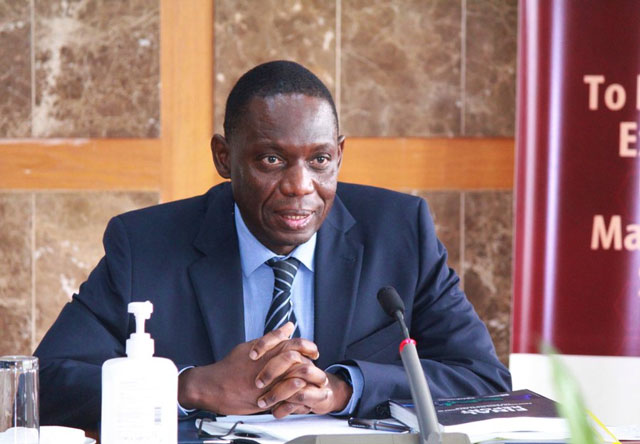
KAMPALA – The Bank of Uganda has once again maintained the Central Bank Rate (CBR) at 6.5%, at the Monetary Policy Committee (MPC) meeting of April 2022.
This was revealed by Michael Atingi-Ego, BoU Deputy Governor in a monetary policy statement.
He says the economy continues to recover from the Covid-19 pandemic-related downturn.
“Annual growth of the real gross domestic product (GDP) was estimated at 5.2% in quarter to December 2021 from 3.5% in the quarter to September 2021. The full reopening of the economy and the diminished impact of the pandemic unlocked the factors that had held back economic activity.”
He adds that “Nonetheless, there are indications that the risk of weakening growth momentum due to adverse global factors that was flagged in February 2022 may have materialised.”
The monetary policy statement indicates that economic growth is now projected in the range of 5.5% -6.0 % in 2022 from 6.0% earlier projected.
The most recent high-frequency economic indicators pointed to a weakening of the domestic growth momentum in March 2022.
“The spike in global geopolitical tensions and supply chain disruptions are likely to hinder the stability and growth of the economy.”
Mr. Governor says inflation has remained below the medium-term (2-3 years ahead) target of 5% for five years to March 2022, however, says inflation has risen in the last two months.
“The annual headline and core inflation rose to 3.7 percent and 3.6 percent in March 2022 from 2.7 percent and 2.3 percent, respectively, in January 2022. This is mainly due to supply chain disruptions that have led to a spike in commodity and energy prices.”
Nevertheless, Atingi-Ego says the inflation remains below the target partly because the spike in prices of some commodities such as those of vegetable oil products carry a relatively smaller share of household budgets. Also, the strong shilling exchange rate helped to dampen price pressures.
“The inflationary developments have led to a revision of the outlook for inflation. Annual headline and core inflation is now forecast to average 5.2% and 4.7%, respectively, in 2022, from 4.5% and 3.9% as had been projected in the February 2022 forecast round. In the medium term, inflation is projected slightly above the target.”
He said that there are considerable risks surrounding the outlook for inflation with the balance of risks tilted upwards.
The main upward risks include:
- Higher global commodity and energy prices due to the worsening of the Russia-Ukraine conflict.
- Heightened uncertainty in the financial markets due to the sanctions on Russia and anticipated tightening of monetary conditions by central banks in Advanced Economies to contain escalating inflation could drive financial flows from frontier markets like Uganda to the safe-haven U.S. dollar assets, thereby weakening the shilling exchange rate.
? Potential worsening of disruptions to global supply chains due to stringent controls of new strains of the Covid-19 virus e.g., China’s “zero-covid” policy.
The main downside risks include:
Diminished domestic demand due to higher energy and commodity prices beyond general affordability.
- Bumper food crop harvests could lead to lower market prices.
Atingi-Ego said that even though inflation is forecast slightly above the 5% target in the medium term, the initial impact of the recent price hikes has not spread across the basket of consumer goods and services.
“Indeed, the prices of some components of the consumer basket have fallen. As such, inflation expectations remain contained.”
Accordingly, the MPC judged that it was prudent to maintain the CBR at 6.5%, at this point. Similarly, the band on the CBR has been maintained at +/-2 percentage points. Consequently, the margins on the rediscount and bank rates remain at 3 percentage points and 4 percentage points over the CBR, yielding rediscount and bank rates of 9.5% and 10.5%, respectively.
“The BoU will closely track inflationary developments and take appropriate pre-emptive action, where necessary, to ensure inflationary expectations remain contained around the medium-term target going forward.”
BoU also says it will maintain the credit relief measures for the education and hospitality sectors which remained under lockdown for an extended period.
Furthermore, it says it will maintain the Covid-19 Liquidity Assistance Program (CLAP) to manage potential liquidity risks arising from the pandemic until the economic situation normalises.







